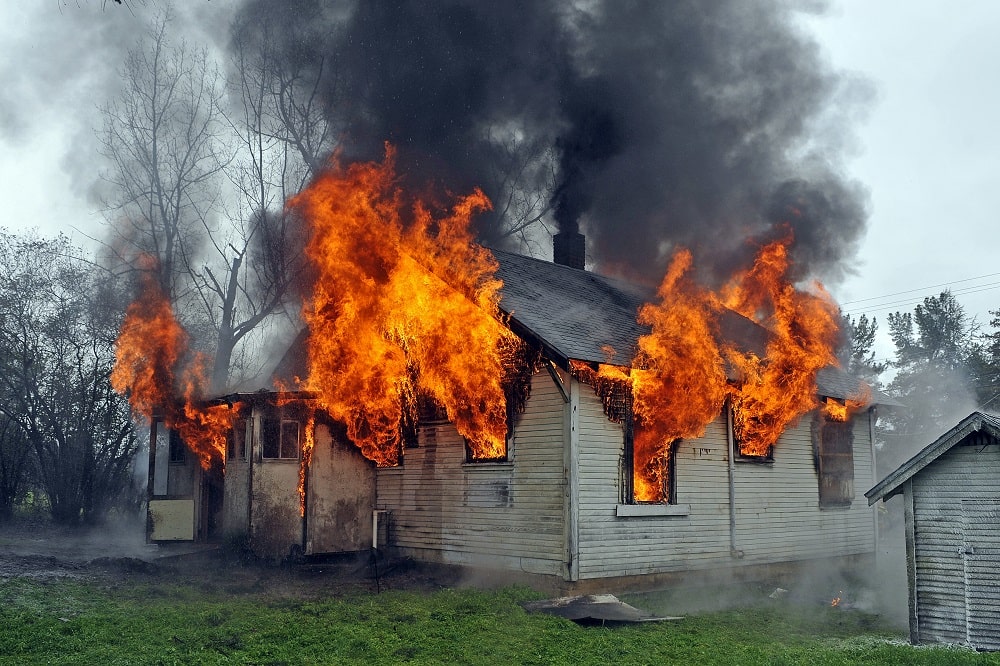
Fire damage refers to the destruction or harm caused by fire to a structure, property, or the environment. A fire can cause various types of damage depending on the intensity, duration, and materials involved. Multiple factors can cause fire damage, and understanding these causes is crucial for fire prevention and mitigation.
Here are some common causes of fire damage:
Overloaded circuits
Overloading a circuit occurs when too many electrical devices or appliances are connected to a single course, exceeding its capacity. Each circuit in a building is designed to handle a specific amount of electrical current, measured in amperes (amps). When the electricity demand surpasses the circuit’s capacity, the excessive current flowing through the wires generates heat. The excessive electrical current flowing through the circuit can generate heat, leading to overheating cables, melting insulation, and ultimately causing a fire.
Meanwhile if you are looking for a reliable property restoration service following fire damage, reach out to fire restoration Lake Charles:
Smoking
Carelessly disposing of cigarettes, cigars, or smoking materials near flammable or improper areas can ignite a fire. Additionally, it’s essential to have smoke detectors installed in your home, maintain them properly, and have fire extinguishers readily available. Fire safety education and awareness can go a long way in preventing smoking-related fires and ensuring the safety of both individuals and property.
Human negligence
Negligence in fire safety practices, such as failing to install or maintain smoke detectors, neglecting fire hazards, or not having fire extinguishers readily available, can contribute to the severity of fire damage.
Here is what you need to do to address human negligence in fire safety practices;
- Install and maintain smoke detectors in appropriate locations throughout your home or building.
- Regularly inspect and test smoke detectors to ensure they are functioning correctly.
- Identify and address potential fire hazards, such as keeping flammable materials away from heat sources and maintaining clear escape routes.
- Ensure fire extinguishers are properly placed, readily accessible, and regularly inspected and maintained.
- Educate yourself and others about fire safety measures, including evacuation plans and the proper use of fire safety equipment.
- Adhere to local fire codes and regulations to ensure compliance and a safe environment.
Cooking accidents
Unattended food preparation, overheating of oil or grease, flammable materials near stoves or ovens, or misusing of cooking appliances can lead to kitchen fires. Cooking accidents are a significant cause of kitchen fires.
It’s important to take the following precautions;
- Don’t leave cooking food unattended. Always switch off the stove or oven when you want to leave the kitchen.
- Stay in the kitchen while frying, grilling, or broiling food. These cooking methods often involve high heat and oil, which can be hazardous if left unattended.
- Keep flammable materials away from heat sources. Ensure that towels, potholders, curtains, and other flammable items are safe from stoves and ovens.
- Regularly clean cooking appliances to remove grease buildup, which can ignite and cause fires.
- Use cooking appliances as intended and follow manufacturer instructions and safety guidelines.
- Have a fire extinguisher in the kitchen and know how to use it correctly.
By practicing fire safety and being cautious in the kitchen, you can significantly reduce the risk of cooking-related fires.
Conclusion
It’s important to note that fire safety measures, including proper maintenance of electrical systems, adherence to cooking safety guidelines, responsible smoking habits, and awareness of potential fire hazards, can significantly reduce the risk of fire damage.
Fire safety risk assessments also involve evaluating fire protection measures, such as sprinkler systems, fire extinguishers, and alarms. Professionals assess the likelihood of fire incidents, potential consequences, and recommend measures to reduce risks, ensuring the safety of occupants and property.




